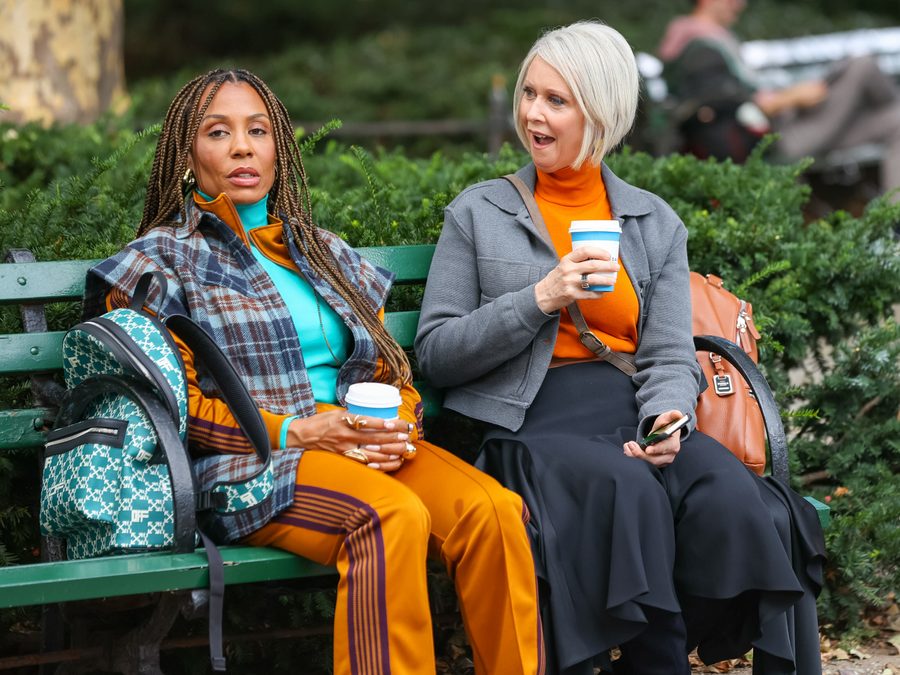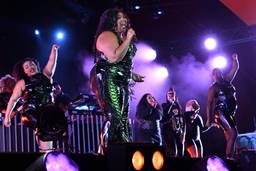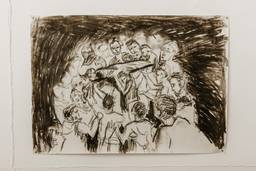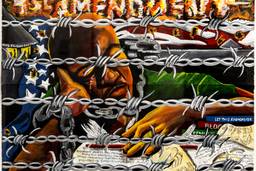Sex and the City's Soft White Supremacy
The new non-white BFFs just serve as accessories (to the white women at the center of the show)
Yasmin Nair

The Sex and the City franchise — six seasons and two movies — opened up conversations about dating and sex that went far beyond what television had imagined during the late 1990s and early 2000s, and it was always funny. But SATC also had issues — not the least of which was that it showed four white, urbane Manhattanites in their thirties with nary a person of color to split between them. Even sexually, the franchise was never as brave as it pretended to be: all four women were eventually goaded into monogamy or shamed for the opposite. Still, fans were eager for the reboot. At the very least, there would be fashion and some laughs.
But And Just Like That dropped like buckshot in a Cosmo, proving only that it should never have happened. Among its many problems is that Carrie, Miranda and Charlotte (Samantha has been churlishly written out as a money-grubber who moved to London) seem to have spent the last twenty years preserved in a snow globe perched in Carrie’s Upper East Side apartment. They have just been freed, choking and gasping from the fumes of a world that has moved on. And, heavens to Versace, the existence of non-white people confounds and mystifies them.
Much has been made of the presence of Black writers like Samantha Irby as proof that the show is trying so hard to create new POC characters. But new characters are pointless if they don’t challenge the whiteness at the center of the show, a whiteness that absorbs others into itself. What AJLT offers is in effect a soft project of white supremacy: an assertion of the necessity of whiteness to justify the creation of non-white characters.
SATC’s long history of racism haunts the reboot. Samantha dated Chivon, a Black music mogul, in season 3 episode 5 (2000) and talked about his “big black cock” as if it were a trophy. Horrifically, it didn’t end there: the episode involved a bizarre subplot about his sister Adeena who tells Samantha to stay away from Chivon because, “it’s a Black thing” and generally acting in a way that asserts Black women as irrational and violent. The episode ends with Samantha proclaiming (and being affirmed in saying) that Adeena’s refusal to let her brother date a white woman is a form of reverse racism. In her sign-off, Carrie says smugly, “Samantha knew the problem wasn’t her ‘little white pussy.’ It was that Chivon was a big Black pussy who wouldn’t stand up to his sister.” The films were replete with stereotypes about Mexico (Charlotte accidentally ingests water in the shower and ends up with public diarrhea) and the Middle East (where the women are unfree and chained, liberated only when they adopt Western garb and makeup).
Critics and viewers wondered how four women in one of the most diverse cities in the world got away with their racial isolation, but the show was never meant to disrupt racism, or meant to reflect changing times. It was always directed towards a national audience comfortable with a vision of an unintegrated social order, even in a show set in a fast-changing metropolis. Tales of vibrators, blowjobs and anal sex may have seemed daring but the real daring, in the early aughts, would have been to integrate people of color into the sacred friends circle. This is something the SATC franchise could never do for fear of alienating its core audience. Samantha being boffed from behind with full frontal nudity? Marvelous! Brave! A Black woman who might have a literal place at the brunch table? Ahh, let’s think about that…never… and, instead, keep using stereotypes.
AJLT tries to rework this racist past by giving all three remaining women non-white Best Friends Forever and fails miserably. Lisa Todd Wexley is the Black woman Charlotte dearly wants to befriend and they are supposedly so alike in nature that the former is openly referred to as “Black Charlotte.” It’s as if poor, delicate Charlotte — who, it turns out, has no Black people in her circle — needs to have a Starter Black Friend.
Carrie befriends Seema Patel, a wealthy, Indian American who gets to sit at the brunch table with the others, filling in for the missing Samantha. But she exists only to be of service: she is introduced as Carrie’s real estate agent who later sets Carrie up with her first online dating profile.
Meanwhile, the figure of Che Diaz, a non-binary Mexican-Irish comic, is also emblematic of this failure and it’s rare to see a single character on any show be so despised — and that’s just by other queer people. Che, with their cheap swagger and talentless comedy is the kind of arrogant prick you avoid at every party. Here, they’re venerated as the universe’s gift to Miranda by inadvertently showing how her entire marriage and the last twenty years have been a lie — with the world’s most economical and efficient handjob.
Critics and viewers are right to point out that all of this renders the new BFFs mere accessories, but if we simply chastise the show for its cringey racism, we miss the point of why it’s so bad. These moments are not accidental: at the heart of the cringe is the saving of whiteness, its recuperation.
Consider, for instance, Miranda’s first encounter with Dr. Nya Wallace, her Columbia University law professor. She mistakes her for a student because she doesn’t recognize her with her braids: “You’re the professor?…You’re Nya Wallace?…well, your braids?!” Later, she attempts to set right what she thinks is a moment of racism when she yells at a security guard for not letting Nya into the building without her university ID, at which Nya points out Miranda’s “white-savior complex” and adds “This isn’t To Kill a Mockingbird, I don’t need a good-hearted lawyer to defend me.” Miranda is flustered and anxious and wonders whether she’ll ever get things right. She gets her chance at redemption when she later saves Nya from a potential mugger and asks, without irony, “Are you okay? It was unclear to me whether that was a white savior moment or not.” Nya responds, “I think that was a ‘any kind of savior will do’ moment.” As the series proceeds, they bond over motherhood and careers: Nya is trying to conceive and processes her troubles with Miranda while the older white woman both commiserates and advises.
The Miranda-Nya arc begins with the former in a position of vulnerability, but the plot is cleverly twisted around to ensure that Miranda — with her fumbling but incandescent whiteness, her story about how the Muslim ban compelled her to leave her job to be anti-racist, her visible liberal guilt — is carefully positioned as the superior person. That Nya should rely on Miranda for advice and confide in her about her marriage and childbearing woes while the latter is still a student in her class is bizarre in 2022 (have the writers not heard about Avital Ronell? Boundaries?). But it places Nya, the Black woman, as someone who needs the white woman in her life — as if she would have no other community of women to help her work out whether or not she even wants children.
Their relationship may seem like a warm development but none of it makes any sense in relation to Miranda’s arc. In the sixth season of SATC, she moved (kicking and screaming) to Brooklyn to which, in 2003, cab drivers refused to drive from Manhattan: it was the borough everyone made fun of and thought of as unlivable. But by the beginning of AJLT, it is The Autonomous Kingdom of Brooklyn and one of the savviest places in the city: it’s likely that her son Brady went to school with children of color, which makes her anxiety over race baffling. Miranda’s discomfort and awkwardness around Black people (who, in today’s New York, is surprised that a Black woman might have a different hairstyle than in her website photo?) is proof that living in a more diverse neighborhood doesn’t make you more able to adjust to a world that’s not composed of only white people. Where the show would have us believe that Miranda is just misunderstood in her adorable Nice White Lady-ness, her backstory reminds us that her disastrous responses are born of an actual resistance to change. Even when she took on a Black lover, Robert, in season six of SATC, she eventually broke up with him for the safety of the needy and passive-aggressive Steve, with whom she has a baby and then moves to Brooklyn (that her twenty years of a marriage to which she never feels attached should come tumbling down in AJLT may be the show’s most realistic point).
In a similar arc, Charlotte and Harry show up at Lisa’s dinner party where they’re the only white people (Aha, we’re told, See, Black people are also like this so, clearly, Charlotte not having Black friends can’t be racist). Lisa’s mother-in-law is a famous concert pianist but somehow lacks the artistic savvy to recognize that her daughter-in-law has impeccable taste in collecting prominent Black artists— a fact that Charlotte smugly points out to her by going through all the work and pointing to its value.
Such story arcs make little sense but help assert the inherent superiority of the white women, their necessity even. Would an accomplished and presumably well-educated concert pianist not recognize the value of the paintings of Deborah Roberts and Mickalene Thomas? Of course not, but the scene allows Charlotte to both rescue Lisa and assert her superior knowledge over the older Black woman. Miranda’s arc allows Nya to actively place her as the white savior, of her own volition: “Any kind of savior will do.” As with Charlotte’s superior knowledge of Black art preceded by her fear of seeming racist, Miranda’s initial presumed failure to understand Blackness sets the stage for her eventual recuperation as an actual and literal savior.
What purpose does the representation of her as some kind of mumbling, fumbling, out-of-place elderly aunt (in a time when 50 is surely at least the new 40!) serve?
The answer lies in the ways that the power of whiteness as both a construct and a lived reality is made apparent at the exact moment when its power seems to be questioned.
The failure is the point.
Yasmin Nair is a writer, academic, and activist. She’s an editor at large at Current Affairs, on the editorial board of the Anarchist Review of Books, co-founder of the radical queer editorial collective Against Equality and the (Volunteer) Policy Director of Gender JUST. She’s currently working on her book Strange Love: A History of Social Justice And Why It Needs To Die. Her writing can be found at www.yasminnair.com.








